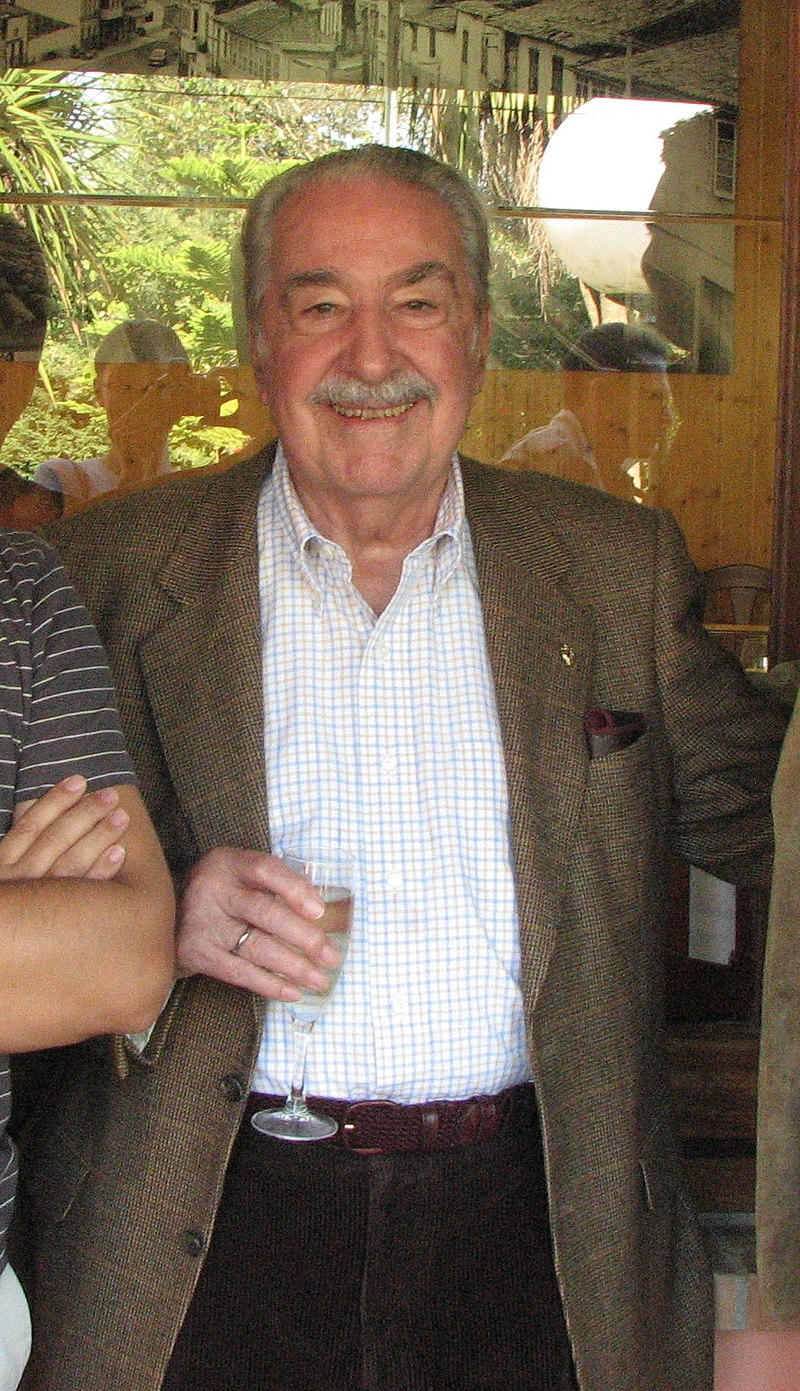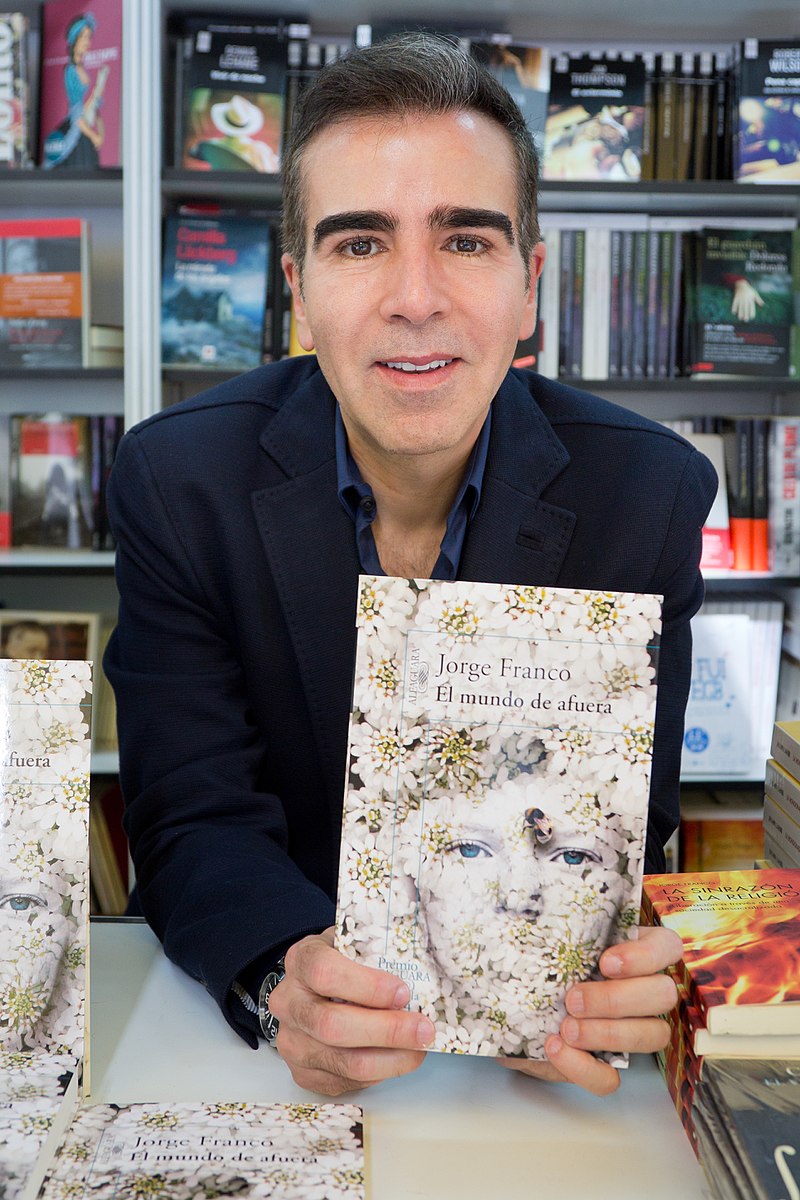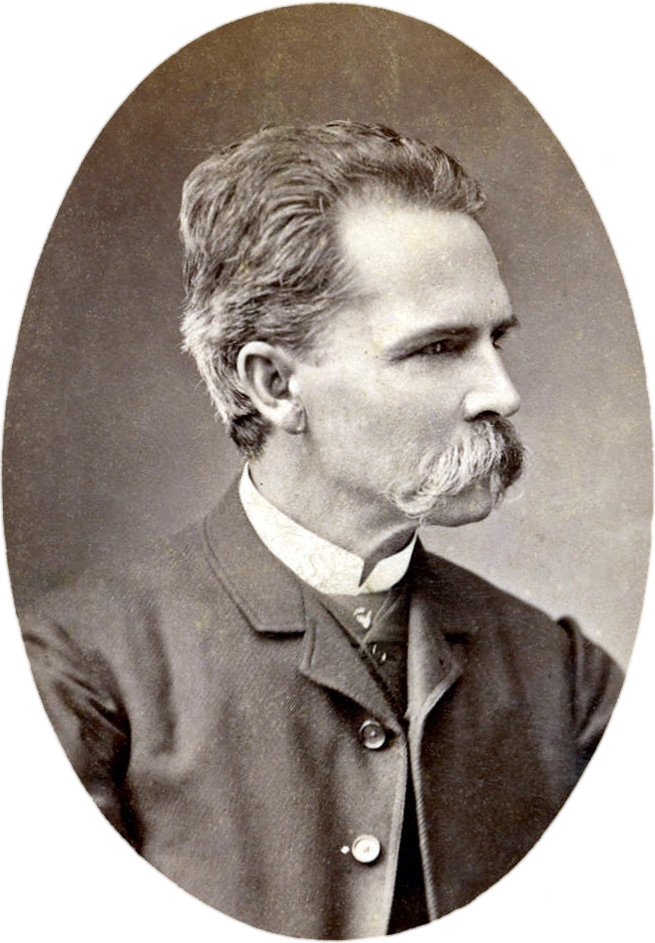Discover the works of these ten best Colombian authors who represent some of the best Colombian literary endeavors.
Colombia’s colorful history has been aptly portrayed on paper by a long line of talented Colombian authors. The dark parts of Colombia’s political and drug problems have been brought to light by brave and outspoken citizens who have chosen to write their history as they lived it.
Table of Contents
Open Table of Contents
Popular Colombian Authors To Read Today
1. Gabriel García Márquez, 1927 - 2014
 Gabriel García Márquez via Wikipedia, Public Domain
Gabriel García Márquez via Wikipedia, Public Domain
Of all the best Cuban authors, Gabriel Garcia Marquez arguably has the most achieved worldwide fame. His short stories and novels are legendary. One, in particular, [One Hundred Years of Solitude](https://amazon.com/dp/B0BFK4THKQ? tag=work089-20), is a favorite of millions worldwide. It has been translated into 46 languages and sold over 50 million copies and counting. Márquez was awarded the Nobel Prize in Literature in 1982. Interestingly, another of his works,No One Writes to the Colonel*, may have been partially inspired by his father’s antagonistic relationship with his father-in-law, a Colonel who disapproved of his daughter marrying Gabriel García Márquez’s father.
Gabriel Garcia Marquez’s literary style was called magic realism, a style that was coined especially to describe his way of describing the worlds he created in his works. Many of his books have been adapted into movies, including Chronicle of a Death Foretold,No One Writes to the Colonel, andLove in the Time of Cholera*, among others. Marquez was so beloved by his countrymen that, when he died in 2014, the president of Colombia proclaimed him “the greatest Colombian who ever lived.”
“On the day they were going to kill him, Santiago got up at five-thirty in the morning to wait for the boat the bishop was coming on.”
Gabriel García Márquez, Chronicle of a Death Foretold
2. Álvaro Mutis, 1923 - 2013
 Álvaro Mutis via Wikipedia, Public Domain
Álvaro Mutis via Wikipedia, Public Domain
Mutis was awarded the Premio Iberoamericano de Novela Rómulo Gallegos in 2009 and the National Prize for Arts and Sciences in Colombia in 1999. The series of Maqroll is a sequence of novels and stories that follow the adventures of a sailor and adventurer named Maqroll el Gaviero. Mutis spent much of his life in Mexico and was a close friend of Octavio Paz, Carlos Fuentes, and Gabriel García Márquez.
Other notable works include The Adventures of Maqrolland The Adventures of Maqroll: Ilona Comes with the Rain. Mutis was a man of many talents and was known for his love of literature, music, and art. He was a private person and often kept to himself, but those who knew him said he was a kind and generous man with great humor. You can also
“Reports had indicated that a good part of the river was navigable up to the foot of the cordillera. It isn’t, of course.”
Álvaro Mutis, The Adventures and Misadventures of Maqroll
3. Jorge Franco, 1962 -
 Jorge Franco via Wikipedia, Public Domain
Jorge Franco via Wikipedia, Public Domain
[Rosario Tijeras](https://amazon.com/dp/B00541Z6WC? tag=work089-20) is Franco’s most famous novel, which tells the story of a young woman who becomes a prostitute and assassin in Medellín, Colombia. He won the Premio de Novela Alfaguara in 1999 and the National Prize for Arts and Sciences in Colombia in 2008. The novel was adapted for the cinema by a Mexican filmmaker. Following that, a television series was made with 60 episodes.
Franco loves the cinematic world and has directed several short films. Other notable works include Paraíso Traveland*Santa Suerte**. Franco was a man who had a deep understanding of the complexities of human nature, and he was known for his ability to create characters that were both relatable and deeply flawed. He had a passion for film and often used the medium to explore the themes of his novels differently.
“He got to know me, not with the minuteness with which I knew him, but with his spontaneous conclusions.”
Jorge Franco, Rosario Tijeras
4. Santiago Gamboa, 1965 -

Gamboa was born in Bogotá, Colombia, where he studied literature. He moved to Spain, studied Hispanic philology, and then to Paris, where he attended the Sorbonne. Nights of the Rainy Seasonis one of his most famous novels. It tells the story of a group of friends in Colombia who are united by their love of literature and their experiences of living through the country’s political turmoil. He was awarded the Herralde Prize in 2005 and the National Prize for Arts and Sciences in Colombia in 2016. He is an avid traveler and has lived in several different countries.
Other notable works include Never Any End to Parisand Necropolis. Gamboa is a man who has always been curious about the world and has a deep love for literature and storytelling. He is remarkable for his interest in exploring different cultures and writing about the various societies that he’s experienced.
“The rabbi turned and looked me in the eyes. Now that you mention it, you are a little pale, have you looked in a mirror lately?”
Santiago Gamboa, Necropolis
5. Laura Restrepo, 1950 -
 Laura Restrepo via Wikipedia, Public Domain
Laura Restrepo via Wikipedia, Public Domain
Restrepo was born in Bogotá, the oldest of two sisters. She tells of attending multiple schools during her childhood because her father took the entire family on business trips. At one point, she attended a school in California for a single day before her father took the family to a new location the next day. Restrepo was a journalist and a political analyst before becoming a novelist. [Delirium](https://amazon.com/dp/B000OYF02U? tag=work089-20) is her most famous novel. It is the story of a woman kidnapped by guerrillas in Colombia and her struggle to survive.
Restrepo won the Grinzane Cavour Prize for that book, plus the National Prize for Arts and Sciences in Colombia in 2015. Other worthy books to read by Resrepo include The Dark Brideand*The Angel of Galilea**. Laura Restrepo is a woman who has always been interested in exploring her country’s social and political issues. She’s known for her ability to create powerful and evocative stories that explore the human condition in all its complexity. Her background in journalism is reflected in her writing.
“I knew something irreparable had happened the moment a man opened the door to that hotel room and I saw my wife sitting at the far end of the room, looking out the window in the strangest way.”
Laura Restrepo, Delirium
6. Mario Mendoza Zambrano, 1964 -
 Mario Mendoza Zambrano via Wikipedia, Public Domain
Mario Mendoza Zambrano via Wikipedia, Public Domain
Born in Bogotá, Colombia, Zambrano became a university Professor of Literature at the same school where he had studied, Pontifica Universidad Javeriana. Through the imagery depicted in several of his works, Mendoza recreates Bogotá, a city that few have attempted to draw. This was initially introduced in the 1992 publication La Ciudad de los Umbrales. In this story, he begins to portray Bogotá as a “transvestite metropolis,” a topic he did not fully discuss until May 2004 at a lecture at the Luis Angel Arango Library.
Zambrano’s work is consistently dark. One has only to read his titles to see that his focus is exposing the dark side of humanity. From Diary of the End of the WorldtoApocalypseto*Scorpio City**, readers are promised a journey that will keep them on the edges of their seats. Mario Mendoza Zambrano’s writings are not for the delicate-minded, but if you enjoy sinister and forbidding literary realms, you’ll undoubtedly enjoy this Colombian writer’s work.
“I liked stopping life, fighting against the relentless passage of time, preventing death from continuing to approach in such an inexorable way.”
Mario Mendoza Zambrano, La Ciudad de los Umbrales
7. Juan Gabriel Vásquez, 1973 -
 Juan Gabriel Vásquez via Wikipedia, Public Domain
Juan Gabriel Vásquez via Wikipedia, Public Domain
An excellent introduction to Juan Gabriel Vásquez would be reading The Sound of Things Falling, about a man in Bogotá, Colombia, who is affected by the drug trade violence and the guerrilla war. Vásquez was awarded the International IMPAC Dublin Literary Award forThe Sound of Things Fallingand the National Prize for Arts and Sciences in Colombia in 2010. He is also a translator and has translated many works of literature into Spanish, including works by J.M. Coetzee, Roberto Bolaño, and Gabriel García Márquez.
Other important works by Vásquez include The Secret History of Costaguanaand*The Shape of the Ruins**. Juan Gabriel Vásquez is deeply interested in exploring his country’s political and social issues. He’s known for his ability to create powerful and evocative stories that explore the human condition in all its complexity.
“Experience, or what we call experience, is not the inventory of our pains, but rather the learned sympathy towards the pain of others.”
Juan Gabriel Vásquez, The Sound of Things Falling
8. Evelio Rosero, 1958 -
Born in Bogotá, Colombia, Rosero was awarded the National Prize for Arts and Sciences in Colombia in 2010. He was a journalist and a translator before becoming a novelist. The Armies is one of his best novels, depicting a man caught in a war between two factions in a small Colombian town. Other notable works includeThe Light of the World, Good Offices, and Stranger to the Moon.
Evelio Rosero is a man who has a deep understanding of the complexities of human nature and is known for his ability to create relatable and deeply flawed characters. His writing often deals with themes of violence, war, and the impact that these have on the human soul. This is likely due to his experience growing up in Colombia. Before becoming a novelist, he was a journalist and translator, which gave him a unique perspective on the world and the ability to tell stories with a sense of authenticity.
“I walk through the streets with a grenade in my hands, accompanied by children.”
Evelio Rosero, The Armies
9. Jorge Isaacs, 1837 - 1895
 Jorge Isaacs via Wikipedia, Public Domain
Jorge Isaacs via Wikipedia, Public Domain
Isaacs had a brief but noteworthy writing career as a politician and soldier. Maria, launched in 1867, was the sole novel he ever published. Nonetheless, it grew to be recognized as the peak of the Latin American romanticism sweeping the subcontinent at the time. It is still regarded as one of the most significant works of Spanish-American literature from the 19th century and provides insight into the fledgling Colombian society of the period.
In 1837, Jorge Isaacs was born in Quibdo. Between 1848 and 1852, he was schooled at Cali, Popayán, and Bogotá. In 1852, Isaacs returned to Santiago de Cali without completing his bachelor’s studies. In 1854, he fought for seven months in the Cauca Campaign against General José Mara Melo’s government.
“Tomorrow—magical word, the night in which we have been told that we are loved!”
Jorge Isaacs, Maria
Frequently Asked Questions
What makes great historical fiction?
Great historical fiction combines accurate historical detail with compelling storytelling. It should transport readers to another time while telling engaging stories about characters who feel authentic to their period while remaining relatable to modern readers.
How accurate does historical fiction need to be?
Historical fiction should be reasonably accurate in its major historical details, but authors can take creative liberties with minor elements and character interactions. The key is maintaining the feel and authenticity of the period while telling a good story.
Why read historical fiction?
Historical fiction offers entertainment while educating readers about different time periods and cultures. It can provide insights into how people lived, thought, and experienced major historical events, making history more accessible and engaging.
What are the best historical fiction books?
The best historical fiction books include ‘The Pillars of the Earth’ by Ken Follett, ‘Wolf Hall’ by Hilary Mantel, ‘The Book Thief’ by Markus Zusak, and ‘All the Light We Cannot See’ by Anthony Doerr. These books excel at both historical accuracy and storytelling.
10. Fernando Vallejo, 1942 -
 Fernando Vallejo via Wikipedia, Public Domain
Fernando Vallejo via Wikipedia, Public Domain
Fernando Vallejo is a Colombian novelist, filmmaker, and essayist born in Medellín, Colombia. He studied chemistry at the National University of Colombia before moving to Mexico in the 1970s, where he still resides. He began his literary career by publishing his first novel, Our Lady of the Assassins, in 1994.
Based on his experiences living in Medellín during the height of the city’s drug-related violence, the book was a critical and commercial success. Since then, Vallejo has published several more novels, including The Whore of Babylon, White Crow,andThe Roads to Rome*, all of which have received critical acclaim.
In addition to his literary career, Vallejo is an accomplished filmmaker, having directed several documentary films. Vallejo has been a vocal critic of Colombian society, particularly the country’s political and economic systems, and has often used his work to explore these issues. He continues to write and make films.
“God, like doctor Frankenstein his monster, man got out of hand.”
Fernando Vallejo, Our Lady of the Assassins

